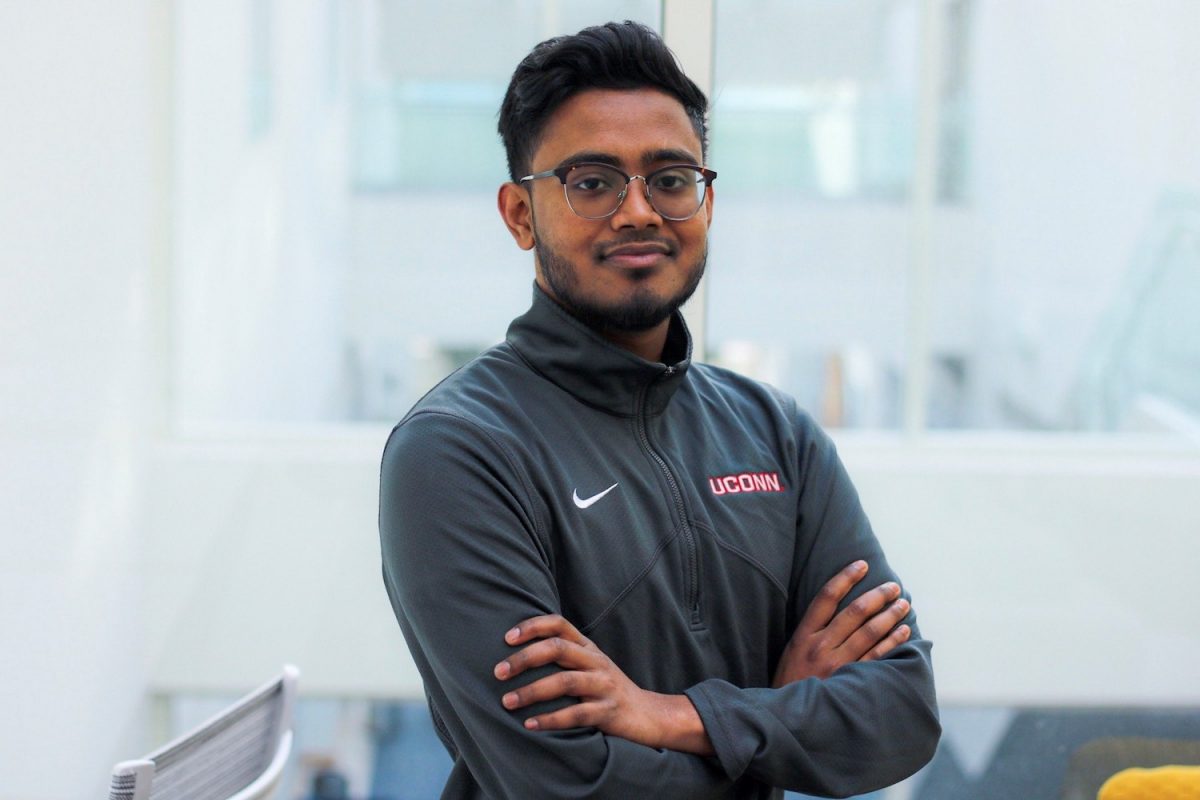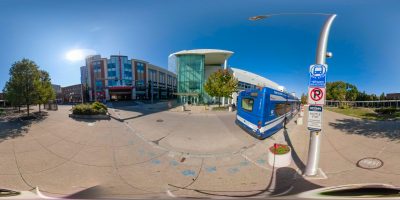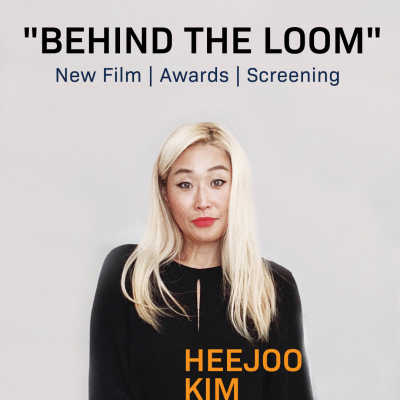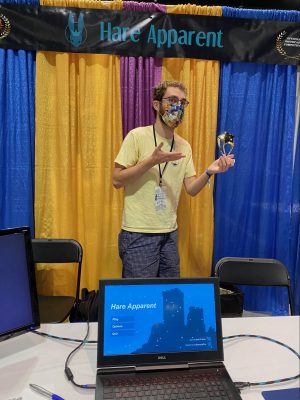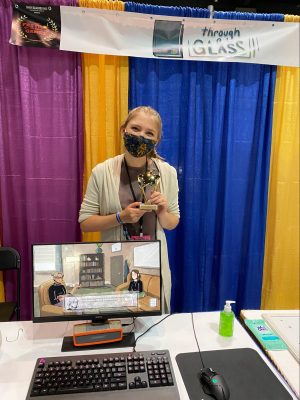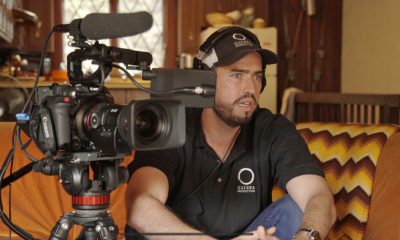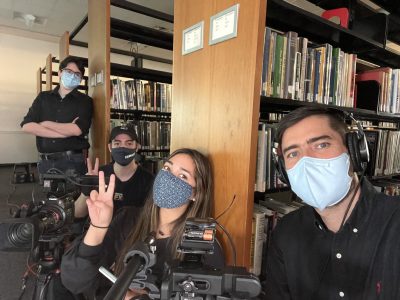November 1, 2022 | UConn Athletics
A first-of-its-kind in college athletics to combine live and original content, UConn+ will provide fans 24/7 access to featured content, live events and institutional content in collaboration with LEARFIELD Studios and SIDEARM Sports

UConn is fully entering the cord-cutting era of live and on-demand digital video.
Coming later this month, fans and followers of UConn Athletics will have a new avenue for absorbing all things Huskies and the University of Connecticut: UConn+. The university’s own sports-centric streaming platform will surface original and exclusive content to fans such as features, live events, profiles, coaches’ shows, highlights and other on-demand content.
UConn+ will be widely available on streaming services such as Apple TV, Amazon Fire TV and Roku, and accessible via the UConn mobile app and uconnhuskies.com.
The new service, which will be a first-of-its-kind in college athletics to combine live and original content, is expected to launch in late November with additional features being rolled out after its release. Until that time, streaming content will continue to be available on uconnhuskies.com.
“UConn+ has the potential to elevate the visibility of UConn Athletics, and I’m grateful for our overarching relationship with LEARFIELD, in which its LEARFIELD Studios and SIDEARM Sports businesses can help us further expand our reach and promote the excellence of our student-athletes, coaches, and the University of Connecticut,” said David Benedict, Director of Athletics. “UConn already boasts championship programs and provides top-quality experiences in state-of-the-art venues for fans and student-athletes alike. With UConn+, we’re adding the capability to engage UConn Nation with exclusive feature content and live sports like never before. This platform will only strengthen our global brand and create more opportunities for success.”
A New Approach to Video Content Delivery at UConn
Benedict’s ambitious vision for a comprehensive streaming digital presence has been in the works for more than a year. While UConn will develop much of the programming internally – including coaches’ shows, press conferences and other mini-features – LEARFIELD Studios has placed production staff on the ground in Storrs supported by a central production team.
“We’re proud of our longtime relationship with UConn and recognize the tremendous added value that UConn+ will bring to Husky fans and to our corporate partners,” said Tom Murphy, general manager for LEARFIELD’s UConn Sports Properties, the university’s athletics multimedia rightsholder. “The sponsors who look to align their brand with the UConn Huskies’ brand soon will have a new platform to creatively connect with fans 24/7/365.”
This dedicated crew will produce more in-depth feature programs, including content geared toward showcasing the various aspects of life as a student-athlete on campus like THE BREAKDOWN a five-part mini-series about 2022 UConn Football training camp, and THE STANDARD – a new mini-series that offers an inside look at UConn women’s basketball. A 24/7 real-time programming stream of content is also planned for possible development.
 “UConn+ can be a game changer for the university,” said Tysen Kendig, UConn’s Vice President for Communications who began exploration of a digital sports network for UConn Athletics in 2021. “Content is unquestionably king, and our audiences increasingly have a thirst for more video, more features, and more multimodal, on-demand ways to consume it. UConn+ is changing the way we produce content in-house, and the model we’ve developed in partnership with LEARFIELD and SIDEARM leverages their considerable assets and expertise to give UConn Nation unprecedented content and access to Husky athletics and the greater university.”
“UConn+ can be a game changer for the university,” said Tysen Kendig, UConn’s Vice President for Communications who began exploration of a digital sports network for UConn Athletics in 2021. “Content is unquestionably king, and our audiences increasingly have a thirst for more video, more features, and more multimodal, on-demand ways to consume it. UConn+ is changing the way we produce content in-house, and the model we’ve developed in partnership with LEARFIELD and SIDEARM leverages their considerable assets and expertise to give UConn Nation unprecedented content and access to Husky athletics and the greater university.”
“Few other major universities in the country competing at the highest level of Division I athletics own the rights and have the wherewithal to produce and deliver a majority of its own live sports content,” he added. “While this landscape is constantly shifting, we are now better positioned to meet the demands of our audiences and have the means to make most of our home Olympic sports and related content across all of our 20 programs directly available to more people than ever before.”
Growth Potential Across the University
UConn students will directly benefit from this endeavor through increased experiential learning opportunities. UConn Athletics and the university’s Digital Media and Design (DMD) program in the School of Fine Arts partnered last fall to create an athletics creative agency. The agency, developed with UConn+ in mind, will give students a chance to earn academic credit under faculty supervision in documentary film production, motion graphic design, and other areas that geared toward enhancing program options.
“We were thrilled to help provide a solution for UConn athletics when they approached us about this endeavor,” said Anne D’Alleva, UConn’s interim provost and dean of the School of Fine Arts. “Our DMD students have been highly sought for years by the likes of NBC Sports, ESPN, and other mainstream media outlets because of the exceptionally high quality of our digital media academic program. UConn+ and this new creative agency will provide additional real-world experience right here on campus, and has generated great excitement among our students and faculty – all of whom enthusiastically bleed blue.”

Beyond athletics, UConn+ also will feature non-sports programs. Initial programming concepts include a research magazine, a talk-show podcast about UConn people and programs, and health promotion spots. An interview series hosted by President Radenka Maric, “Worth Repeating,” is already in production, and includes head football coach Jim Mora as the first guest. The multimedia production team in University Communications, with staff in Storrs and Farmington, is fully integrated as part of UConn+, and will be responsible for providing this additional menu of content.
“Athletics is not just a tremendous point of pride for our community, it’s a front porch that helps bring people into the front door of this amazing university,” said Kendig. “UConn+ gives us another vehicle for shining a light on the academic and research champions here that positively impact Connecticut and the human condition. The ideas are limitless, and we believe this endeavor has great potential to grow over time.”
Stay tuned to uconnhuskies.com and UConn’s social media platforms for more information and content pertaining to UConn+ in the weeks ahead.
Original Article via UConn Today: https://today.uconn.edu/2022/11/university-to-launch-uconn-streaming-digital-network/









